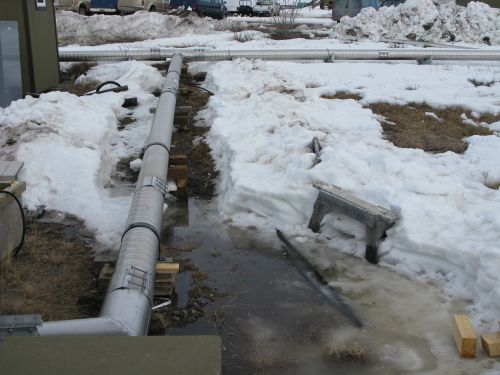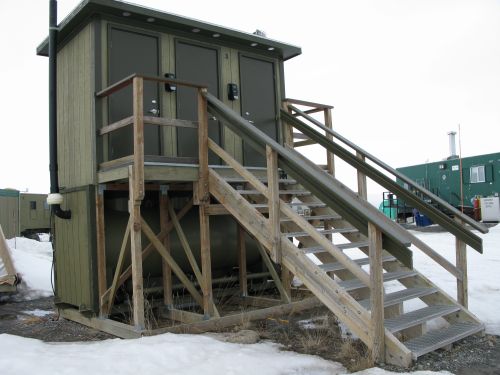Question to Ponder- Discussion
A few days ago I asked
What special considerations are there for building a field station that can house up to 150 people in the middle of the Arctic tundra? I have told you about where we sleep and eat, but what other needs would all these scientists have and how would the Arctic make meeting these needs more challenging?
Some of the major challenges of building and maintaining a field site in the Arctic revolve around getting rid of waste and building in a permafrost zone. All garbage, wastewater and recycling must be trucked out of camp and since the ground is frozen year round, you cannot utilize traditional plumbing and water storage systems. Don’t forget that Fairbanks is 9 hours away by small truck and often takes much longer for a larger truck that has to travel at slower rates of speed.
Waste Removal
Trash separation is an important part of daily life at Toolik. Trash is sorted into burnable and non-burnable waste. Anything that is burnable such as food waste and paper is incinerated on-site.

All glass and aluminum is recyclable, but must be trucked to Fairbanks. Lastly, all plastics are also trucked to Fairbanks to go through a special process that melts them down and converts them to diesel fuel.

Water
Although we have all the amenities one needs to live and work comfortably, we have to be aware of our water usage. The water used at camp comes from a well drilled below the lake into an aquifer. So water usage is not really the issue. The problem is dealing with the wastewater, which must be trucked up to Prudhoe Bay at a cost of over $1 per gallon. Keep in mind the average American uses any where from 60 to 100 plus gallons of water per day. We are much more conscious of our water usage at Toolik. We are allowed one two-minute shower twice per week and one load of laundry every two weeks. Also due to permafrost, the water pipes must be above ground.

Another major water use is flushing the toilet, which uses between 3.5 and 7 gallons of water per flush. So at Toolik we use the towers. No flushing needed here! As you can see the photo below, the sewage tank is above ground which necessitates the tower.

Building Foundations
PermafrostPermanently frozen ground. can shift so building foundations need to be adjustable. As you can see in the photo below, the new dinning hall can easily be leveled as needed.

Question to Ponder
Science is being conducted all around Toolik and there is a lot of scientific equipment. What is the purpose of this device?



Comments